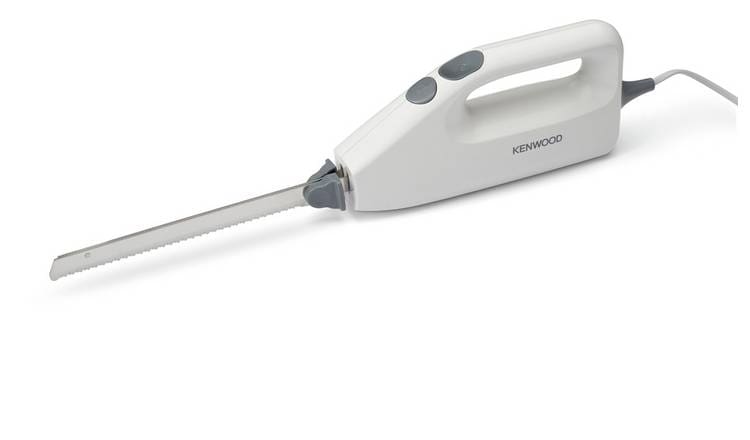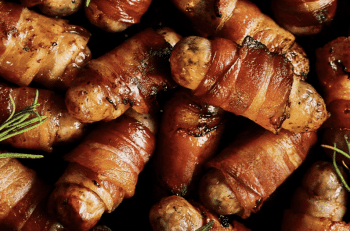Christmas is a time of joy, celebration and feasting. But it can also be a time of stress, especially if you are the one in charge of preparing and serving the festive meal.
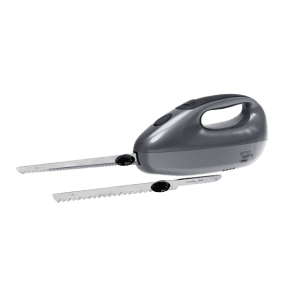 One of the most daunting tasks, we have found, is carving the turkey, which can be tricky, messy and time-consuming. That’s why you might want to consider getting an electric carving knife, a handy kitchen device that can make your life easier and your slices neater.
One of the most daunting tasks, we have found, is carving the turkey, which can be tricky, messy and time-consuming. That’s why you might want to consider getting an electric carving knife, a handy kitchen device that can make your life easier and your slices neater.
There’s no doubt that for anyone who can’t slice meat into delicate or even slices, the prospect of dishing up chunkier portions of meat will feel some embarrassment at their lack of culinary skills. An electric carving helps to solve this problem and is a great investment when slicing a big turkey breast for family and guests.
An electric carving knife is a great investment if carving isn’t your strong suit because this knife can make quick work of slicing your turkey or roast. Alternatively, a sharp carving knife and sturdy fork will also do the trick. We have some carving tips and tricks for those who prefer using a knife and fork later in this article.
What is an electric carving knife?
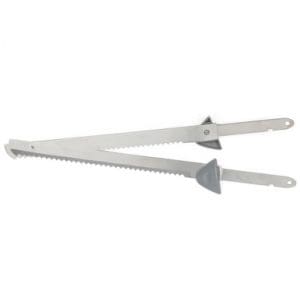
The blades move back and forth rapidly, creating a sawing motion that cuts through meat, bread and other foods with minimal effort from you.
All you need to do is guide the knife along the food and let it do the work.
Why do people use electric carving knives?
There are many benefits to using an electric carving knife, such as:
- It saves you time and energy. You don’t have to spend ages struggling with a manual knife, which can be tiring and frustrating. An electric carving knife can cut through food quickly and easily, leaving you more time to enjoy your meal and your guests.
- It gives you even and uniform slices. You don’t have to worry about making uneven or ragged cuts, which can ruin the presentation of your food. An electric carving knife can produce smooth and consistent slices that look appetizing and professional.
- It reduces waste and mess. You don’t have to deal with excess crumbs, juices, or bits of meat that can fall off your manual knife. An electric carving knife can cut through food cleanly and precisely, leaving less waste and mess on your cutting board and plate.
- It works with different types of food. You don’t have to limit yourself to carving meat with an electric carving knife. You can also use it to slice bread, cheese, fruit, vegetables, cake, and more. It can handle both soft and hard foods, as well as cooked and raw foods.
Are electric carving knives just for Christmas?
No, electric carving knives are not just for Christmas. They are useful for any occasion that involves cutting large or thick pieces of food, such as a Sunday roast, a birthday cake or a cheese board. They are also great for everyday use, such as slicing bread for sandwiches or toast, or cutting meat for salads or wraps.
Why should people who aren’t confident about carving get an electric carving knife?
If you are not confident about carving, an electric carving knife can be a game-changer for you. It can help you overcome some of the common challenges that people face when carving with a manual knife, such as:
- Lack of skill or experience. You don’t have to be an expert or have a lot of practice to use an electric carving knife. It is easy to operate and control, and it does most of the work for you. You just need to follow some basic tips and techniques (see below) to get good results.
- Fear of injury or damage. You don’t have to worry about hurting yourself or damaging your food with an electric carving knife. It has safety features that prevent accidental activation or blade detachment. It also has a gentle cutting action that does not tear or shred your food. However, for most people who do not regularly handle sharp knives carving, an electric carving knife can be safer – but please be careful whether using an electric or traditional carving knife. Also, having an electric knife also makes keeping the meat still with a fork a lot easier as you concentrate on delivering thin slices of tasty meat.
- Anxiety or pressure. You don’t have to feel nervous or stressed about carving in front of your family or guests with an electric carving knife. It can boost your confidence and make you look more competent and comfortable. It can also impress your diners with your neat and elegant slices.
What to look for when buying an electric carving knife?
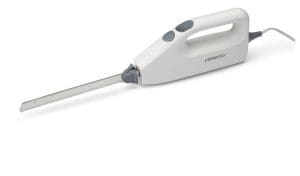
Power. The power of an electric carving knife determines how fast and how well it can cut through food. The higher the wattage, the more powerful the knife. A good range is between 100W and 200W. You should also check the cord length and the battery life (if cordless) of the knife to ensure that it suits your needs.
- Blades. The blades of an electric carving knife are the most important part of the device. They should be sharp, durable, and easy to clean. Some knives come with different blades for different purposes, such as a heavy-duty blade for meat and a lighter blade for bread. You should also look for blades that are dishwasher-safe or have a quick-release mechanism for easy removal and cleaning.
- Handle. The handle of an electric carving knife should be comfortable, ergonomic, and secure. It should fit well in your hand and have a good grip. It should also have a convenient location for the power button and a dual safety switch to prevent accidental activation.
- Price. The price of an electric carving knife can vary depending on the brand, the features, and the quality. You can find some well-priced decent models for under £30, but you can also pay more for higher-end ones. You should compare different options and read customer reviews to find the best value for your money.
How to use an electric carving knife effectively?
To use an electric carving knife effectively, you should follow these steps:
- Prepare your food. Make sure that your food is cooked properly and rested for at least 10 minutes before carving. This will ensure that the juices are distributed evenly, and the meat is tender and moist. You should also remove any bones, strings, or skewers that might interfere with the carving process.
- Choose your blade. Depending on what type of food you are carving, you should select the appropriate blade for your electric carving knife. For example, use a heavy-duty blade for meat and a lighter blade for bread. Make sure that the blade is clean and securely attached to the handle. Be aware that most electric carving knives just come with one set of blades.
- Plug in or charge your knife. If your electric carving knife is corded, plug it into a nearby socket and make sure that the cord is not in the way. If your electric carving knife is cordless, make sure that it is fully charged before using it.
- Turn on your knife. Press the power button and hold it down to activate the knife. You should hear a buzzing sound and see the blades moving back and forth. Do not touch the blades or point them at anyone while the knife is on.
- Carve your food. Hold the food steady with a fork or tongs and place the knife at a slight angle on the surface of the food. Apply gentle pressure and guide the knife along the food, letting it do the cutting for you. Do not force or push the knife too hard, as this can damage the blades or the food. Cut thin and even slices that are about 0.5cm thick.
When carving with an electric knife, you can use different techniques for different types of food, such as:
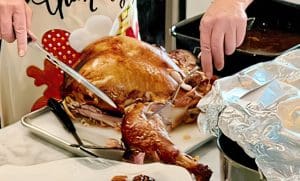
- For a turkey crown, make a deep cut to the breastbone, beneath each breast. Then either cut long thin slices down the length of each breast from the neck end or cut off each breast in one piece and slice across it.
- For bread, cheese, fruit, vegetables, cake, and other foods, simply slice them as you would with a manual knife, but with less effort and more precision.
Turn off and clean your knife. When you are done carving, release the power button and turn off the knife. Carefully remove the blade from the handle and wash it with warm water and soap or put it in the dishwasher (if dishwasher-safe). Wipe down the handle with a damp cloth and dry it thoroughly. Store your knife in a safe place until the next use.
How to use a carving knife and fork for a perfect Christmas feast
Whether you’re serving a traditional turkey, a succulent ham or a mouth-watering roast beef joint, you will want to carve it with skill and precision.
We have looked at using an electric carving knife, but lots of people will prefer using a traditional carving knife and fork set, which can help you slice and serve your meat with ease and elegance.
A carving knife and fork set is a pair of tools designed for cutting and serving meat. The knife has a long, thin blade that can glide through the meat smoothly, while the fork has two or more prongs that can hold the meat in place and lift it to the plate.
But how do you use a carving knife and fork set properly? Here are some tips and tricks to help you carve your meat like a pro:
Choose the right carving knife and fork set for your meat
Not all carving knife and fork sets are the same. Depending on the type and size of your meat, choose a set that suits your needs. Here are some factors to consider when choosing a carving knife and fork set:
- The blade length and shape. The blade of the carving knife should be long enough to cut through the meat in one stroke, without having to saw back and forth. The blade should also be thin and flexible, so that it can follow the contours of the meat and avoid wasting any. The blade shape can vary depending on the type of meat. For example, a straight blade is good for slicing ham or roast beef, while a curved blade is good for slicing poultry or lamb.
- The handle and grip. The handle of the carving knife and fork should be comfortable and ergonomic so that you can hold them securely and confidently. The handle should also be non-slip, so that you don’t lose control when it gets wet or greasy. The handle shape can also vary depending on your preference. For example, some people prefer a round handle, while others prefer a flat or angled handle.
- The fork design and size. The fork of the carving knife and fork set should have two or more prongs that can pierce and hold the meat firmly, without tearing or shredding it. The fork should also be long enough to reach the centre of the meat without being too bulky or heavy. The fork design can also vary depending on the type of meat. For example, some forks have a guard or a hinge that can protect your hand from the knife blade, while others have a straight or curved shape that can match the knife blade.
Prepare your meat and cutting board
Before you start carving your meat, make sure that it is cooked to your liking and that it has rested for at least 20 minutes. This will allow the meat to retain its juices and become more tender and flavoursome. Make sure that you have a large and sturdy cutting board that can accommodate your meat and catch any drippings. You can also place a damp cloth or a non-slip mat under the cutting board to prevent it from sliding or moving.
Position your meat and secure it with a fork
Once your meat and cutting board are ready, position your meat on the cutting board and secure it with the fork. Insert the fork into the centre of the meat at an angle that allows you to cut across the grain of the meat, which will result in more tender and juicy slices. Placing the fork into the centre means you can balance and control the meat as you cut. You can use the fork to lift and rotate the meat as needed, but avoid moving it too much, as this can cause the meat to lose its juices.
Cut your meat with the knife and serve it with a fork
Now that your meat and fork are in place, you can start cutting your meat with the knife. Use a smooth and steady motion, without applying too much pressure or force. Cut thin and even slices, which will make your meat more appealing and easier to eat. You can use the tip of the knife to cut around any bones or joints, and the heel of the knife to cut through any tough or thick parts. As you cut your meat, you can use the fork to transfer the slices to a serving platter or to your guests’ plates. You can also use the fork to pick up any loose or small pieces of meat that may fall off the knife.
Enjoy your meat and clean your carving knife and fork set
When you have finished eating, clean your electric carving knife and fork set properly, so that they can last longer and perform better. You can wash them by hand with warm water and mild soap or put them in the dishwasher if they are dishwasher safe. You can also dry them with a soft cloth or a paper towel and store them in a safe and dry place.

